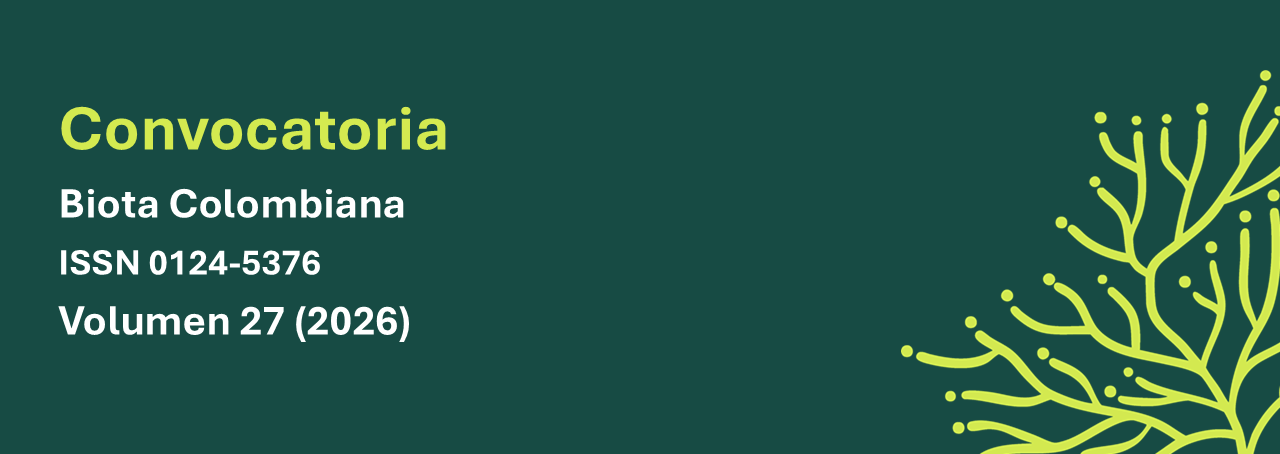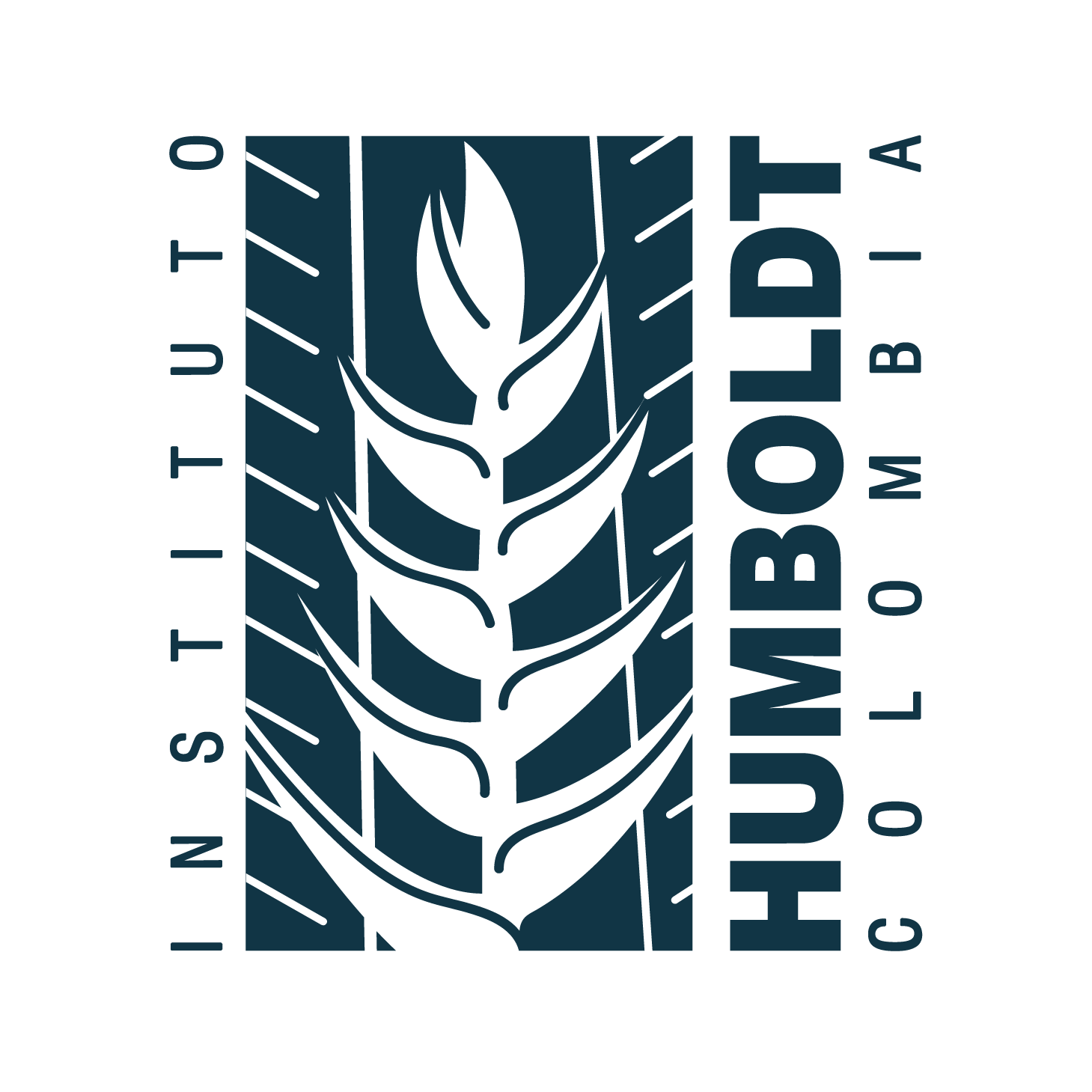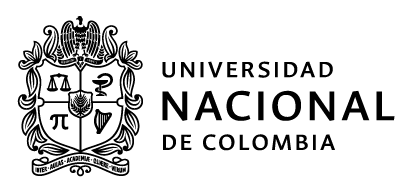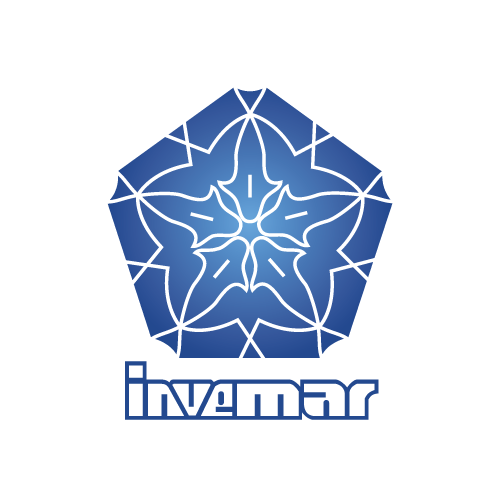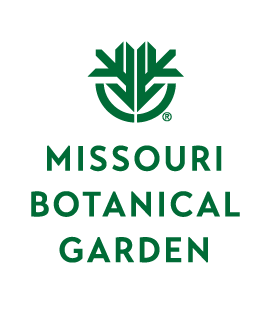Abstract (en):
Orchids constitute a highly diverse taxonomic group, among which species of the genus Gongora are particularly relevant due to their association with Euglossini bees, important pollinators in the Neotropics. In order to understand aspects of the biology, such as the richness and diversity of this group, plant material was reviewed in herbaria and databases of the genus in the country. The biodiversity analysis program DIVA GIS was employed to determine the actual distribution of collection records, as well as identifying areas with the highest richness and potential diversity of the genus. A total of 32 species are reported, with Antioquia, Chocó, and the eastern foothills of the Eastern Cordillera being the regions with the greatest richness and diversity. Similarly, the Caribbean, Orinoco, and Amazon regions present the lowest number of reported occurrences of the group, likely due to limited sampling, geographical factors, and bioclimatic characteristics. Therefore, increasing exploration in these areas and conducting further analyses on the bioclimatic preferences of the group could enhance our understanding of the genus biodiversity.
Abstract (es):
Las orquídeas son un grupo taxonómico muy diverso, dentro del cual, las especies del género Gongora tienen una alta relevancia debido a su relación con las abejas Euglossini, importantes polinizadoras en el neotrópico. Con el fin de conocer aspectos de la biología como la riqueza y diversidad del grupo, se revisó material vegetal en herbarios y bases de datos del género en el país. Se utilizó el programa para análisis de biodiversidad DIVA GIS para determinar la distribución real de los registros en colección, así mismo, los lugares con mayor riqueza y diversidad potencial del género. Se reportan 32 especies, siendo Antioquia, Chocó y el piedemonte oriental de la cordillera Oriental las zonas con mayor riqueza y diversidad. Del mismo modo, la región Caribe, Orinoquía y Amazónica presentan el menor número de reportes del grupo, debido probablemente a una baja cantidad de muestreos, la geografía y las características bioclimáticas, por lo que aumentar la exploración de estas áreas y realizar análisis posteriores de preferencias bioclimáticas del grupo podría ampliar el conocimiento de la biodiversidad del género.
Keywords:
Neotropical flora, herbaria, collections, biological records, geography (en)
References
Ackerman, J. D. (1989). Geographic and seasonal variation in fragrance choices and preferences of male Euglossine bees. Biotropica, 21(4), 340-347. https://doi.org/10.2307/2388284
Allen, P. H. (1954). Pollination in Gongora maculata. Ceiba, 4, 121-125. https://revistas.zamorano.edu/index.php/CEIBA/article/view/888
Alrich, P., & Higgins, W. (2008). The Marie Selby Botanical Gardens Illustrated Dictionary of Orchid Genera. Comstock Publishing Associates.
Bernal, R., Gradsteinm, S. R. & Celism, M. (Eds.) (2020). Catálogo de plantas y líquenes de Colombia. Universidad Nacional de Colombia. https://doi.org/10.15472/7avdhn
Betancur, J., Sarmiento, H., Toro-González, L., & Valencia, J. (2015). Plan para el estudio y la conservación de las orquídeas en Colombia. Ministerio de Ambiente y Desarrollo Sostenible Colombia; Universidad Nacional de Colombia.
Cameron, S. A. (2004). Phylogeny and biology of neotropical orchid bees (Euglossini). Annual Review of Entomology, 49, 377-404. 10.1146/annurev.ento.49.072103.115855
Castellanos-Castro, C., & Torres-Morales, G. (2018). Orquídeas de Cundinamarca. Conservación y aprovechamiento sostenible. Instituto Humboldt; Pontificia Universidad Javeriana; Jardín Botánico de Bogotá; Corpoica; Gobernación de Cundinamarca.
Dodson, C. H., & Frymire, G. P. (1961). Natural pollination of orchids. Missouri Botanical Garden Bulletin, 49(9), 133-152.
Dressler, R. L. (1982). Biology of the orchid bees (Euglossini). Annual Review of Ecology and Systematics, 13, 373-394. http://dx.doi.org/10.1146/annurev.es.13.110182.002105
Escobar, R. (Ed.) (1990). Native Colombian orchids. Colombian Orchid Society.
Fay, M. (2018). Orchid conservation: How can we meet the challenges in the twenty-first century? Botanical Studies, 59, 16. https://doi.org/10.1186/s40529-018-0232-z
Gale, S. W., Fischer, G. A., Cribb, P. J., & Fay, M. F. (2018). Orchid conservation: Bridging the gap between science and practice. Botanical Journal of the Linnean Society, 186(4), 425-434. https://doi.org/10.1093/botlinnean/boy003
Garófalo, C. A. (1992). Comportamento de nidificação e estrutura de ninhos de Euglossa cordata (Hymenoptera: Apidae: Euglossini). Revista Brasileira de Biologia, 52(1), 187-198.
Gaskett, A. C., & Gallagher, R. V. (2018). Orchid diversity: Spatial and climatic patterns from herbarium records. Ecology and Evolution, 8(22), 11235-11245. https://doi.org/10.1002/ece3.4598
Gerlach, G. (2003). La subtribu Stanhopeinae: sus notables mecanismos de polinización, la química de sus aromas florales e implicaciones en sistemática y taxonomía. Lankesteriana, 7, 104-106. https://doi.org/10.15517/lank.v3i2.23029
Gerlach, G. (2010). Stanhopeinae mesoamericanae, V. El aroma floral de las Stanhopea de México. Lankesteriana, 9(3), 431-442. https://doi.org/10.15517/lank.v0i0.12105
Gerlach, G. (2011). The generus Coryanthes: A paradigm in ecology. Lankesteriana, 11(3), 253-264. 10.15517/lank.v11i3.18280
Giraldo, G., & Betancur, J. (2012). Guía de campo de las orquídeas de Santa María (Boyacá, Colombia). Instituto de Ciencias Naturales, Universidad Nacional de Colombia.
Hetherington-Rauth, M., & Ramírez, S. R. (2015). Evolutionary trends and specialization in the Euglossine bee-pollinated orchid genus Gongora. Annals of the Missouri Botanical Garden, 100, 271-299. https://doi.org/10.3417/2014035
Hijmans, R., Schreuder, M., De la Cruz, M., & Rojas, E. (2001). Computer tools for spatial analysis of plant genetic resources data: DIVA-GIS. Plant Genetic Resources Newsletter, 27, 15-19.
Hills, G. H. (1989). Fragrance cycling in Stanhopea pulla (Orchidaceae, Stanhopeinae) and identification of trans-limonene oxide as a major fragrance component. Lindleyana, 4, 61-67.
Hills, G. H., & Williams, N. H. (1990). Fragrance cycle of Clowesia rosea. Orquidea, 12, 119-132.
Janes, J., Steane, D., & Vaillancourt, R. (2010). An investigation into the ecological requirements and niche partitioning of Pterostylidinae (Orchidaceae) species. Australian Journal of Botany, 58, 335-341. http://dx.doi.org/10.1071/BT10041
Janzen, D. H. (1971). Seed predation by animals. Annual Review of Ecology and Systematics, 2, 465-492. https://doi.org/10.1146/annurev.es.02.110171.002341
Janzen, D. H. (1981). Bee arrival at two Costa Rican female Catasetum orchid inflorescences, and a hypothesis on Euglossine population structure. Oikos, 36, 177-183. https://doi.org/10.2307/3544443
Janzen, D. H., Devries, P. J., Higgins, M. L., & Kimsey, L. S. (1982). Seasonal and site variation in Costa Rican Euglossine bees at chemical baits in lowland deciduous and evergreen forests. Ecology, 63(1), 66-74. https://doi.org/10.2307/1937032
Jenny, R. (1993). Monograph of the genus Gongora Ruiz & Pavon. Koeltz.
Körner, C. (2003). Alpine plant life: Functional plant ecology of high mountain ecosystems. Springer.
Mesa, S. (2020). El género Gongora en Colombia [ponencia]. Congreso Internacional en Orquídeas, Biodiversidad & Educación, Villavicencio.
Mogrovejo, A. L., & Proaño Y. L. (2020). Filogenia molecular del género Gongora Orchidaceae, de las especies registradas en el Ecuador. Universidad Politécnica Salesiana.
Nates Parra, G., & González, V. (2000). Las abejas silvestres de Colombia: porqué y cómo conservarlas. Acta Biológica Colombiana, 5(1), 37. https://revistas.unal.edu.co/index.php/actabiol/article/view/26678
Ortiz, P., & Uribe, C. (2007). Galería de orquídeas de Colombia. Asociación Bogotana de Orquideológica.
Otero, J. T., Sandoval, S., Martínez, S., Valdéz-Benites, O., Molina, E., Bonilla, M., Aguirre, C., Garzón, Y., Zapata, J., Maldonado, C., & Ruiz, E. (2022). Abejas euglosinas de Nariño y Putumayo, Colombia. Universidad Nacional de Colombia.
Ramírez, S., Dressler, R. L., & Ospina, M. (2002). Abejas euglosinas (Hymenoptera: Apidae) de la región neotropical: listado de especies con notas sobre su biología. Biota Colombiana, 3(1), 7-118. https://revistas.humboldt.org.co/index.php/biota/article/view/108
Ramírez, S. R., Eltz, T., Fujiwara, M. K, Gerlach, G., Goldman-Huertas, B., Tsutsui, N., & Pierce, N. (2011). Asynchronous diversification in a specialized plant-pollinator mutualism. Sciencek, 333(6050), 1742-1746. https://doi.org/10.1126/science.1209175
Roubik, D. W., & Hanson, P. E. (2004). Abejas de orquídeas de la América Tropical: Biología y guía de campo. INBio.
Sarmiento, J. (2007). La familia Orchidaceae en Colombia. Actualidades Biológicas, 29 (supl. 1), 84.
Whitten, W. M., Williams, N. H, Armbruster, W. S, Battiste, M. A, Strekowski, L., & Lindquist, N. (1986). Carvone oxide: An example of convergent evolution in Euglossine pollinated plants. Systematic Botany, 11(1), 222-228. https://doi.org/10.2307/2418960
Whitten, W. M., Williams, N. H., & Chase, M. W. (2000). Subtribal and generic relationships of Maxillarieae (Orchidaceae) with emphasis on Stanhopeinae: Combined molecular evidence. American Journal of botany, 87(12), 1842-1856. https://doi.org/10.2307/2656837
Wikelski, M., Moxley, J., Eaton-Mordas, A., López-Uribe, M. M., Holland, R., Moskowitz, D., Roubik, D., & Kays, R. (2010). Large-range movements of neotropical orchid bees observed via radio telemetry. PLOS One, 5(5), e10738. https://doi.org/10.1371/journal.pone.0010738
Zotz, G. (2013). The systematic distribution of vascular epiphytes. A critical update. Botanical Journal of the Linnean Society, 171, 453-481. https://doi.org/10.1111/boj.12010
Zucchi, R., Sakagami, S. F., & Camargo, J. M. F. (1969). Biological observations on a neotropical parasocial bee, Eulaema nigrita, with a review on the biology of Euglossinae (Hymenoptera, Apidae). A comparative study. Journal of the Faculty of Science Hokkaido University, 17(2), 271-380. http://hdl.handle.net/2115/27489
How to Cite

This work is licensed under a Creative Commons Attribution-NonCommercial-NoDerivatives 4.0 International License.
Copyright (c) 2025 Instituto de Investigación de Recursos Biológicos Alexander Von Humboldt


